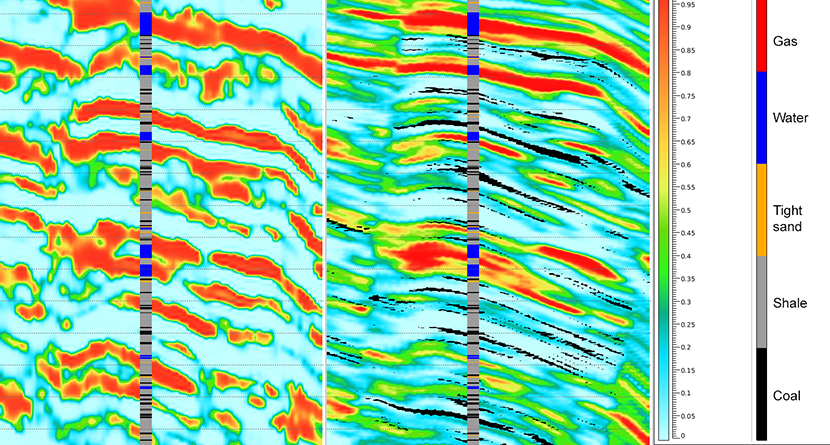Geostatistical seismic reservoir characterization brings more accurate understanding of the reservoir
Paris, France | Jun 15, 2017
Geoscientists in the oil & gas industry face many challenges in their quest to de-risk and drill the best wells and more confidently forecast production. CGG GeoSoftware geostatistical seismic reservoir characterization solutions are powerful allies in successfully tackling these complex subsurface challenges.
Two GeoSoftware solutions, HampsonRussell GeoSI and Jason RockMod, overcome limitations of conventional well-based reservoir modeling. Using seismic inversion, they ensure that the high-resolution model is accurate not only at the wells, but also between them. The limitation of seismic resolution associated with deterministic seismic inversion is lifted because geostatistical methods such as GeoSI and RockMod integrate data at different scales, including well log data. Geoscientists can easily generate multiple plausible realizations that help assess uncertainty in the reservoir model and decide whether to plan a new well location or select scenarios for flow simulation.
Fully integrated in the HampsonRussell suite, GeoSI is used to perform advanced follow-on studies after deterministic inversion studies with Strata. GeoSI is easy to learn and use, yet powerful and feature-rich. Using seismic angle stacks, GeoSI inverts for P- and S-Impedance and generates multiple realizations of elastic properties using Sequential Gaussian Simulation (SGS). Following this, facies are obtained with Bayesian classification, and facies bodies are extracted from individual realizations. For facies of interest, geoscientists can generate a predicted probability volume and facies volumes at selected quantiles (e.g. P10, P50 and P90) using the multiple high-resolution realizations generated by SGS. Generating a large number of realizations for this process is fast, and a ranking tool based on net pay is included to select the realizations to use in further processing. With GeoSI, you quickly gain insight into the uncertainty in the reservoir. Coming soon, HampsonRussell 10.3 will increase performance on models with large numbers of layers and create facies maps.
Jason RockMod is the most advanced technology for providing reservoir models in corner point grid (CPG) for static and dynamic modeling. Stochastic inversion in RockMod is based on the Markov Chain Monte Carlo (MCMC) algorithm. Facies distribution within a reservoir is a major source of uncertainty in modeling reservoir properties and flow, and RockMod excels at identifying facies bodies. The multi-level facies modeling tool’s flexibility allows for a complex a priori facies model with geological context. During inversion, facies are simultaneously inverted with elastic and reservoir properties through rock physics models. Facies ‘interpretations’ can therefore be very subtle: bodies do not have to stand out everywhere against their surroundings. Faint or invisible features can be hypothesized and synergies exploited between facies and continuous properties, giving more accurate results. All types of seismic data can be used for the inversion: time or depth seismic (angle or offset stacks) as well as PP-PS, 4D or azimuthal data.
After generating multiple realizations, the ranking tool helps select realizations for direct transfer, with or without upscaling, to a third-party CPG. Coming soon in Jason 9.7 are a streamlined user interface for 4D, Azimuthal, and PP-PS inversion, and a tool to easily generate multiple scenarios and fully understand all uncertainties associated with the reservoir characterization project.
Today’s reservoir challenges span relatively simple to highly complex scenarios within a backdrop of limited budget and geoscientific resources. Operators are asking what level of reservoir understanding is good enough to reduce uncertainty to an acceptable level before proceeding with a project. The scalability in GeoSoftware’s offering for geostatistical seismic reservoir characterization provides a range of options for geoscientists to answer this question.
Visit CGG GeoSoftware on EAGE booth #630 for daily presentations and demos on demand.
